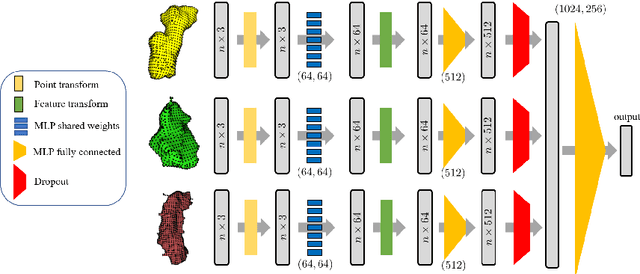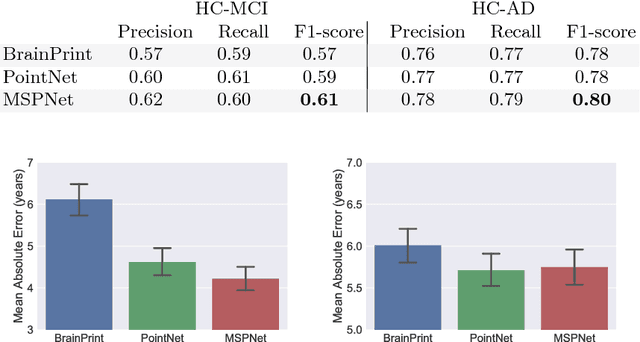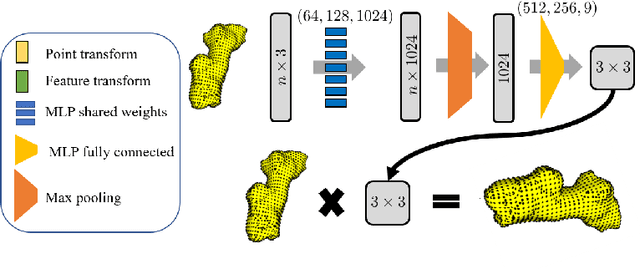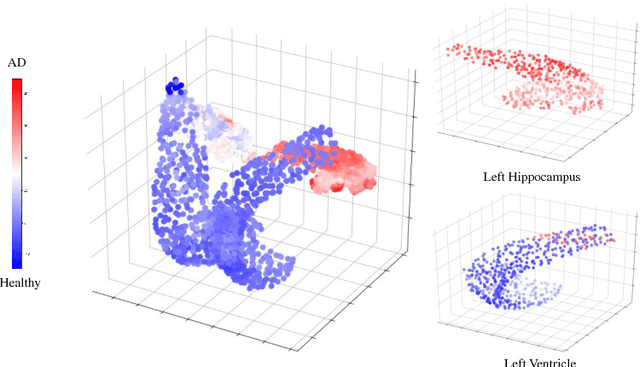Deep Multi-Structural Shape Analysis: Application to Neuroanatomy
Paper and Code
Jun 04, 2018



We propose a deep neural network for supervised learning on neuroanatomical shapes. The network directly operates on raw point clouds without the need for mesh processing or the identification of point correspondences, as spatial transformer networks map the data to a canonical space. Instead of relying on hand-crafted shape descriptors, an optimal representation is learned in the end-to-end training stage of the network. The proposed network consists of multiple branches, so that features for multiple structures are learned simultaneously. We demonstrate the performance of our method on two applications: (i) the prediction of Alzheimer's disease and mild cognitive impairment and (ii) the regression of the brain age. Finally, we visualize the important parts of the anatomy for the prediction by adapting the occlusion method to point clouds.
 Add to Chrome
Add to Chrome Add to Firefox
Add to Firefox Add to Edge
Add to Edge